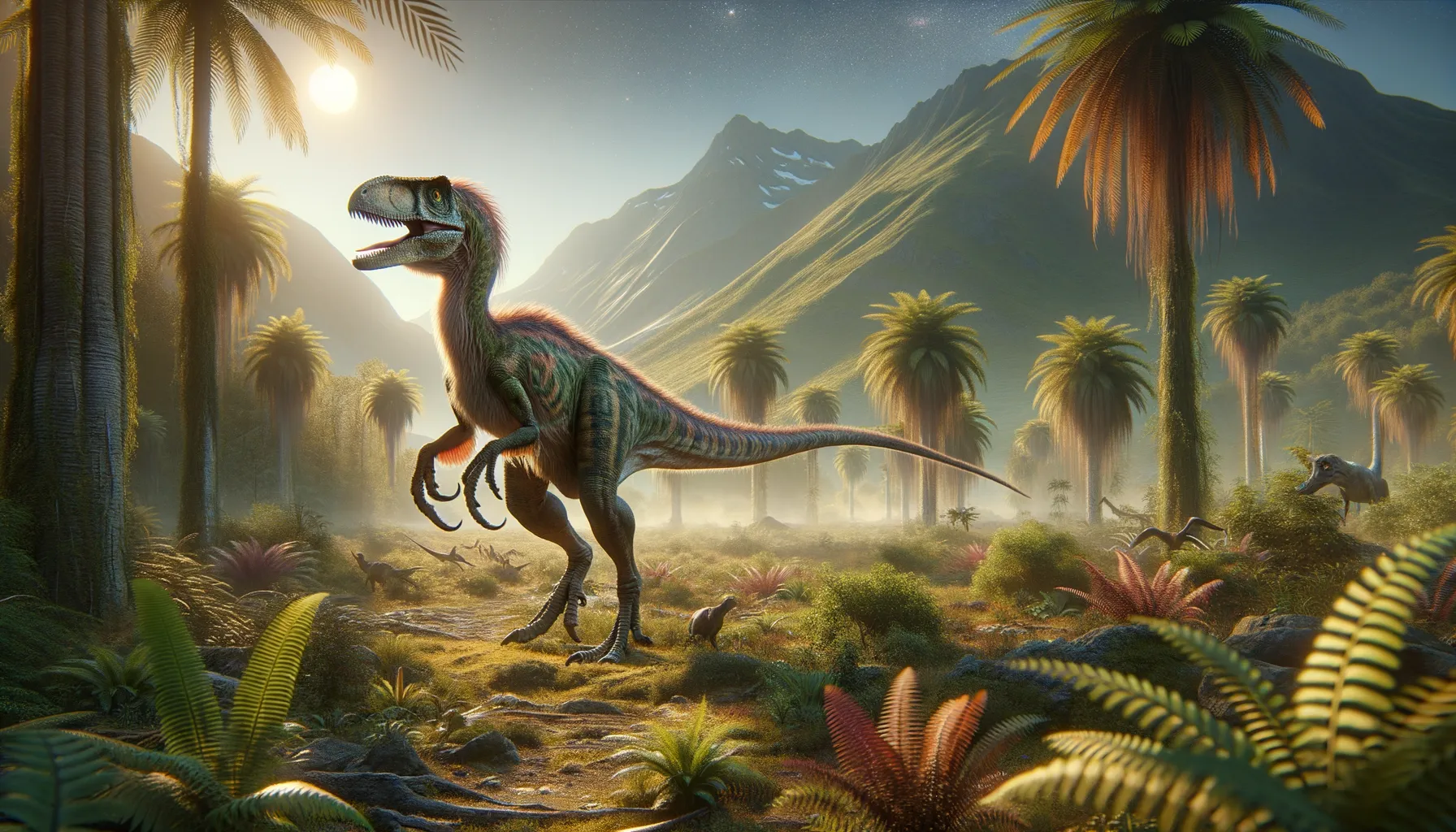
Martharaptor
A swift predator of ancient Cretaceous lands.
Period
Cretaceous
Length
Approximately 4 meters long.
Height
Around 1.5 meters tall at the hip.
Weight
Approximately 50 to 70 kilograms.
Martharaptor is a fascinating theropod dinosaur known for its bird-like features and unique evolutionary traits. First discovered in the diverse ecosystems of the Cretaceous period, it provides critical insights into the evolution of predatory dinosaurs. Its fossils offer clues about dinosaur behavior, interactions, and adaptation strategies in a rapidly changing environment. As a medium-sized dinosaur, Martharaptor likely thrived on its agility and keen senses.
Diet
Martharaptor was an omnivore, primarily feeding on small animals and possibly plants. It likely adapted its diet based on the availability of resources, contributing to its survival in diverse environments.
Hunting
It used its agility and sharp senses to hunt and potentially ambush smaller prey. Its diet flexibility suggests it may have scavenged when necessary or even relied on plant matter during scarce resources.
Environmental challenges
Martharaptor lived during a time of significant climatic changes, requiring adaptations to survive the fluctuations in temperature and vegetation. Competition for food with other predators could have driven its adaptive evolution. Environmental pressures may have influenced its social structures and hunting tactics.
Speed
Moderate, likely agile in short bursts.
Lifespan
Estimated to be around 15 to 20 years.
First discovery
Discovered in the Cedar Mountain Formation, Utah.
Fun Facts
- Martharaptor was discovered in Utah and named after an amateur paleontologist who contributed to its discovery.
- It belonged to a group of dinosaurs called theropods, which also includes the famous Tyrannosaurus rex.
- Despite being a theropod, Martharaptor was likely more interested in nibbling on plants than hunting other dinosaurs.
- The dinosaur lived during the Early Cretaceous period, around 130 million years ago.
- Martharaptor's bones were found in a very fragmented state, making it quite a puzzle for paleontologists to piece together.
- Its discovery has helped scientists understand more about the diversity of plant-eating dinosaurs in North America.
- Martharaptor is unique due to its combination of both primitive and advanced features that provide insight into dinosaur evolution.
Growth and Development
Martharaptor likely experienced rapid growth rates during its juvenile stages, enabling it to reach reproductive maturity quickly. Fossil evidence suggests complex growth patterns possibly due to environmental stressors. Studies of its bone structure reveal insights into its life cycle and developmental milestones.
Habitat
This dinosaur inhabited varied environments from forests to open plains, depending on resource availability. Its habitat choice was likely influenced by the need for cover and proximity to water sources. The Cretaceous landscape presented diverse terrains, offering both challenges and opportunities for survival.
Interaction with other species
Martharaptor co-existed with a variety of dinosaurs, leading to complex predator-prey dynamics. It may have engaged in symbiotic relationships with certain herbivores for mutual benefits like protection or vigilance. Such interactions influenced the evolutionary paths of species sharing its habitat.
Natural lifespan
Martharaptor's natural lifespan is speculated to be similar to other theropods, around 20 years.
Reproduction
Martharaptor likely laid eggs, with nesting behaviors potentially similar to modern birds. Parental care behaviors might have existed to ensure offspring survival, though exact methods remain speculative. Reproductive strategies were crucial for overcoming ecological challenges.
Social behaviour
Martharaptor may have lived in loose groups to facilitate hunting and protection. Communication through vocalizations or body language might have been key to its social structure. Cooperative behaviors possibly supported survival in fluctuating environments.
Fossil locations
Fossils of Martharaptor have been primarily found in the Cedar Mountain Formation in Utah. These findings offer rich insights into its ecological niche and adaptation strategies. Further discoveries could reveal more about its distribution and environmental interactions.
